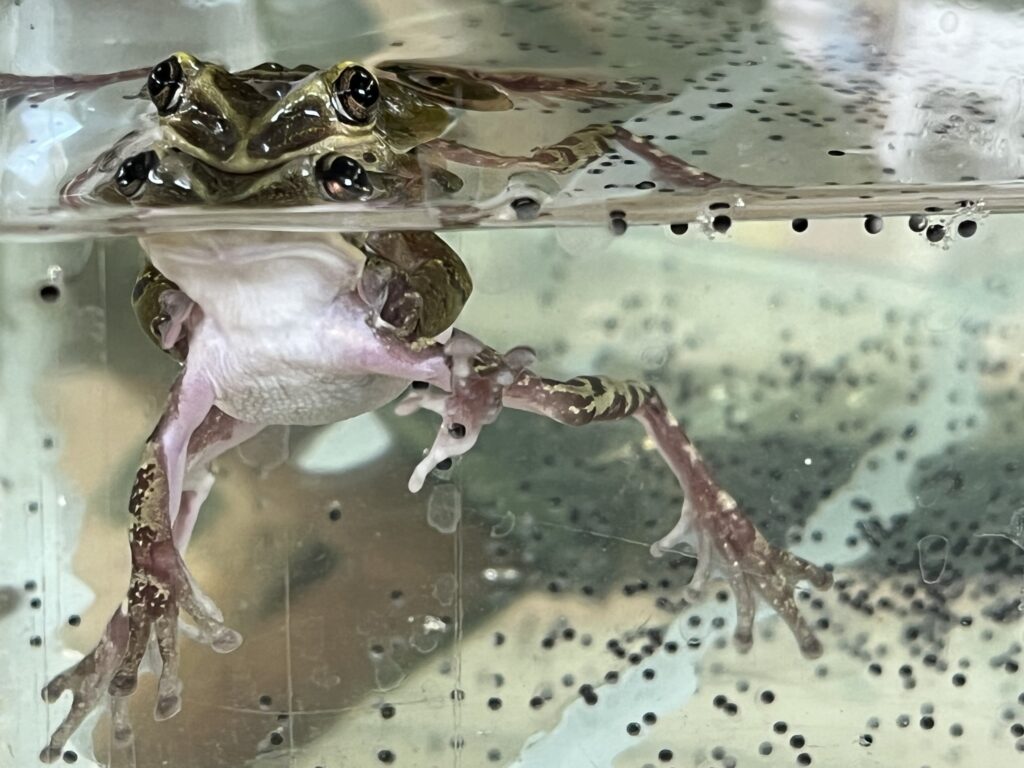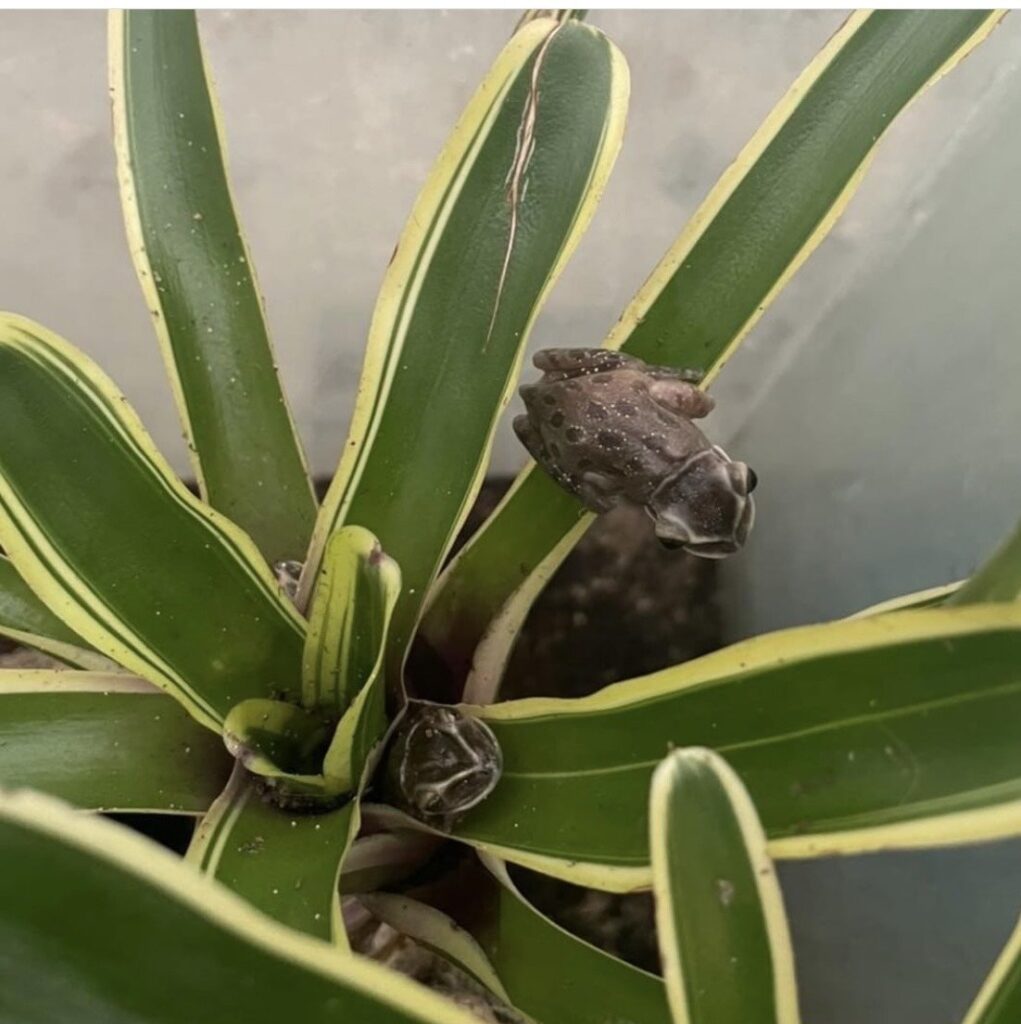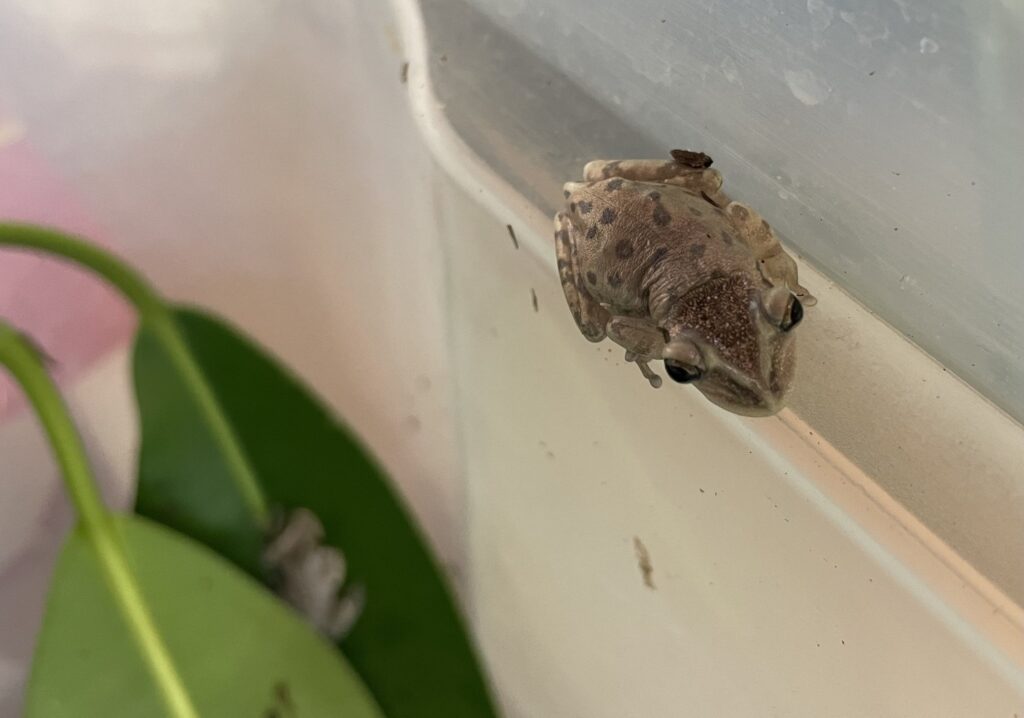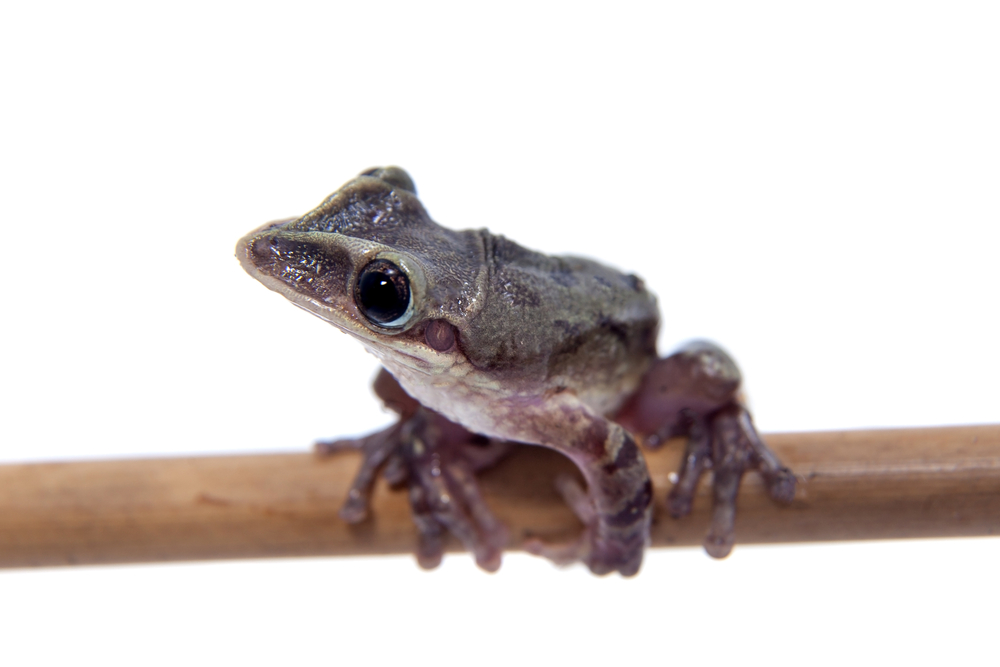Keeping and breeding Yucatan casque-headed tree frogs.
The Yucatan casque-headed tree frog (Triprion petasatus) or “duck-faced” frog is perhaps the strangest-looking tree frog on the planet. Although there are several species of “casque-headed” frogs, petasatus certainly has the most-peculiar dermal bone structure. As well as its duck-like facial features, the males have even been known to “quack.” It is a species rarely seen in private collections, but Michaela Králová, a breeder from the Czech Republic thinks that might change very soon.

Yuck!
Triprion petasatus is found across the Yucatan Peninsula in southern Mexico and into adjacent Belize. This enormous peninsula that stretches far into the Gulf of Mexico is comprised almost entirely of limestone. While there are sinkholes in the stone, known locally as ‘cenotes’ there are no rivers or streams. The harsh climate limits the crops that can be harvested by early Mayan civilisations to corn, maize and beans (the paving stones for today’s Mexican foods). Although there are moist forests in the centre of the Yucatan, these are over 50% deciduous trees that lose their leaves in the harsh summer heat. Seasons also vary massively. Monsoon season can see extreme rainfall every day and temperatures of 35°C+, whereas the dry season can see entire months with almost no rain and daytime temperatures of just 18°C. While this creates unimaginable conditions for frogs to thrive in, it also means the frogs have adapted in weird and wonderful ways.
Michaela keeps her casque-headed tree frogs year-round in a greenhouse only heated during the winter. “The adults are very hardy frogs” explains Michaela. “They are fine with temperatures dropping right down to 15°C. They prefer it very dry, too, so we don’t have to spray them very often, maybe every few days. However, the babies are the exact opposite. A few people that bought the offspring, put them into enclosures of 21°C and they soon became skinny and eventually died. I think it could be a bacterial thing, kickstarted by the lower temperatures, but we’re not sure. We keep all our juveniles at around 24°C in plastic boxes with only top ventilation to keep the humidity really high.”
Michaela relies on large bromeliads to provide a humid refuge for the adults, as they would experience in the wild. Some evidence suggests that Yucatan casque-headed frogs can spend the entire dry season tucked away inside holes within trees. In some regions where rainfall is more frequent, they will occupy large bromeliads and any reservoirs of water that they can hide in. This behaviour also means they are reasonably common around human-inhabited areas. “They are perfectly adapted to squeeze into small spaces” adds Michaela. “Their weird-shaped head lets them tuck themselves into the leaves of a bromeliad perfectly, without being easy to spot.”
The temperature within the greenhouse varies from 15°C to over 30°C. Although this can make it difficult to suggest the ideal husbandry practices for Yucatan casque-headed tree frogs, it appears that they benefit from some fluctuations in their environment. For many frogs, light seasonal changes can spur breeding behaviour, but it seems Yucatan casque-headed tree frogs benefit from reasonably drastic changes.


The ugly ducklings
“We had 15 specimens and only four were female” explains Michaela. “The breeder we sourced them from also said she has a ton of males and no females so it’s sort of like the situation with Theloderma corticale (Vietnamese mossy frog). The sex ratio in captivity is just really bad. So, when we saw the females were producing eggs we thought y’know what, let’s just try it. We didn’t do any deliberate changes, just the seasonal changes that the greenhouse experiences and then placed them into a rain chamber and the next morning we had eggs. We didn’t get to see any calling or amplexus, it was super fast! We did this with another female and noticed the same pattern.”
Despite having four gravid females, Michaela had to slow the breeding process down and only add two females to the rain chamber. This is because female casque-headed tree frogs lay clutches of 1500 – 2000 eggs. This meant that Michaela ended up with a total of 2,000 frogs and therefore had to use the surplus tadpoles to feed some snakes in her collection. This is a common problem when breeding some species of amphibians that naturally produce thousands of eggs to offset the hundreds of eggs, tadpoles and froglets that would otherwise be preyed upon by insects, snakes, birds and even other tadpoles. While many institutions are required to euthanise animals that they cannot find a home for, the option to feed the young frogs and tadpoles to certain snake species and provide a naturalistic diet seemed preferable to euthanising healthy animals.
Michaela continues: “People always ask how we do something, but we always breed things quite simply. The system we use for almost all our frogs is to just put them in a rain chamber around springtime and it’s still working! We just put them in the rain chamber and leave the ‘rain’ on until they breed. The tadpoles don’t look strange. In fact, when the frogs first metamorphose, they look completely normal. They’re in the Hylidae family and the juveniles look just like young Hyla. They’re a pretty normal-looking frog actually and, as a week passes, their head just starts to squeeze. That was another thing that shocked me. The tadpoles are cannibalistic to some extent, but they only feed on weaker tadpoles. For example, if a tadpole is missing part of its tail, or is much smaller, they will probably be eaten but they’re definitely not as cannibalistic as Dendrobates or Lepidotrichias.”
The tadpoles of Triprion petasatus develop very quickly. In fact, froglets began appearing after just 24 days and their tails were completely absorbed after 29 days. This is possibly an adaptation to the harsh environments they occupy in the wild. Once the frogs have metamorphosed, they are housed in plastic boxes with wet foam as a substrate and mesh lids to reduce airflow and increase humidity. As a species that produces lots of offspring that grow very quickly, Yucatan casque-headed tree frogs are perfectly adapted to breeding in the short monsoon seasons. It also means the young frogs typically grow to adulthood in a short space of time when humidity can reach upwards of 80% and rain almost every day totalling 175mm of rainfall. “Although the plastic tubs don’t look as nice as terrariums, we’ve found they work really well at creating a microclimate that the young frogs enjoy,” adds Michaela. “We have also tried this technique with our tomato frogs (Dyscophus sp.). We raised some tadpoles and placed some of the froglets in a plastic tub with high humidity and little airflow and other froglets in a traditional terrarium setup. Before long, we found that the frogs raised in the plastic tubs were almost twice the size of the ones in the terrarium. We’re not completely sure why, but it certainly works for us. For the duck-faced frogs, we used some cut Scindapsus plants at first so they could sit on it, but they preferred to sit on the sides of the box, so we stopped putting the plants inside. They were in this box till the tail was fully absorbed. They were then transferred into taller boxes with pine bark substrate and Ficus elastica”
“Another thing that’s different about the babies is they eat A LOT. They need to be fed every single day, whereas the adults are fine to go a few days without food. I know this is usually the case for most frog species, but with Triprion it seems until they are a few months old or at least around 3cm and develop a belly they need to be fed constantly. Every time they poop, they go from healthy-looking frogs to very thin. This usually lasts for a few months until they are fully developed.” Michaela feeds the tadpoles mostly dry carnivorous fish food and the adults are on a diet comprised mostly of crickets. As she must feed hundreds of frogs at a time, feeding one staple diet is a good way of keeping track of the animals’ diets, however it is highly likely that these frogs will eat a whole myriad of insects and a varied diet should be encouraged if a keeper is maintaining a small quantity of animals.


What’s the quack?
Because tree frogs typically lay hundreds, if not thousands of eggs and husbandry practices have improved greatly in recent years, new species can become established within the trade relatively quickly. However, there are potential problems in establishing Triprion petasatus in captivity. Michaela continues: “When they’re not mating, the males and females look very similar and it’s very hard to distinguish the sexes until they’re put into the rain chamber. The males can become very spotty with green and yellow patterns. I think perhaps some females could be those colours but the males are brighter when they are mating. However, we had 15 specimens and only four females. It looks like other breeders are in a similar position. The person we sourced these from in Russia also has loads of males but no females. I think this is the same situation as Theloderma corticale (Vietnamese mossy frogs), where the sex ratio in captivity is really bad. We were checking the frogs to identify the sex when we found that the females were carrying eggs.”
Although the popularity of red-eyed tree frogs (Agalychnis callidryas) and poison frogs (Dendrobates sp.) paint the picture that only the most brightly coloured and beautiful frogs will be bred in large enough numbers to become established pets, several species highlight people’s love for the weird and wonderful. White’s tree frogs (Litoria caerulia) are perhaps the most commonly kept of all tree frogs because of their hardy nature and charismatic features. African clawed frogs (Xenopus sp.) were also extremely popular when fishkeeping became more mainstream because they were easy to keep and breed and provided something more unusual to a tropical tank. Could the casque-headed tree frog be next?
Michaela concludes: “When my friend told me he was buying Triprion, I thought wow, they’re so cool! But I was thinking of Triprion spinosus (crowned tree frog). When he told me we were going to breed petasatus I was a bit disappointed because I thought they looked really ugly actually. But, they’re so weird and I’ve grown to love them. When it came to selling froglets, many people were interested because of their unusual looks. Plus, once they reach adulthood, they are really easy to care for so I think they will become more popular in the future.”
If you enjoyed this feature, sign up for a free digital subscription here.


